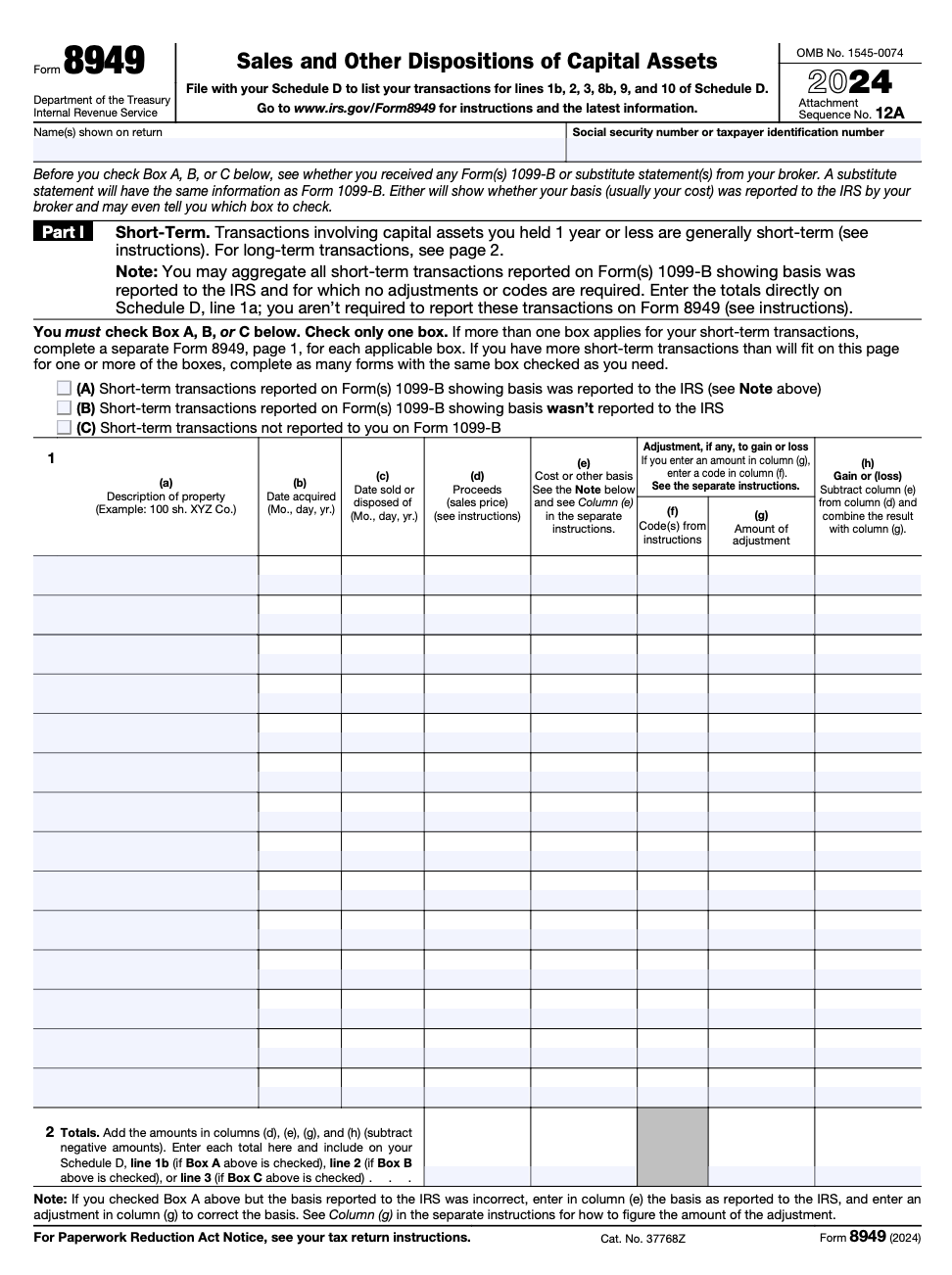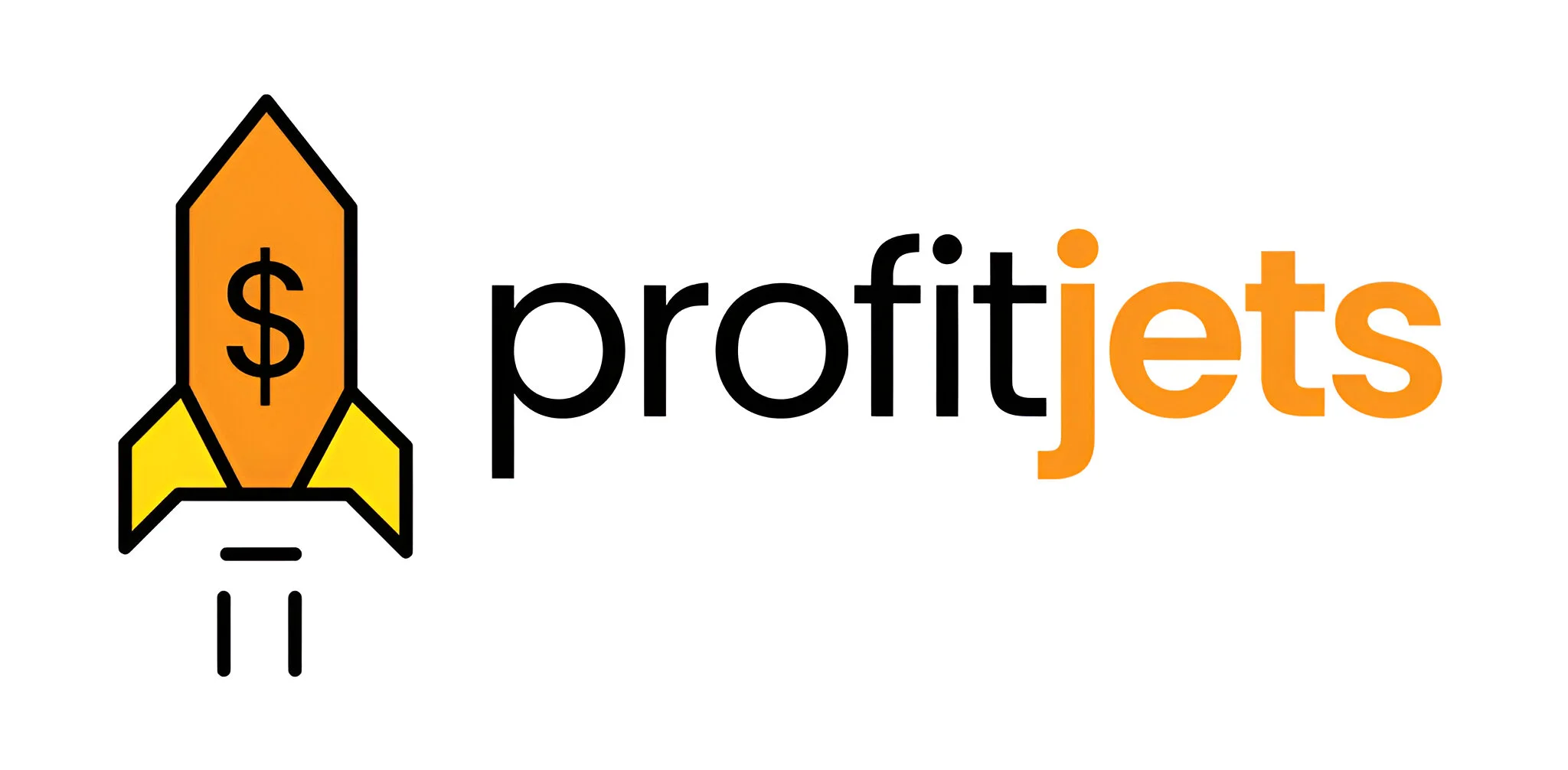Filing Form 8949 is an essential part of reporting your capital gains and losses when you sell investments. In this guide, we’ll break down the process into clear, manageable steps, ensuring you complete the entire form correctly. Whether you’re an individual investor or a small business owner with investment activities, understanding how to file Form 8949 can help you stay compliant and save on taxes. If you need extra help, professional tax services can provide the expert guidance you need.
Table of Contents
What Is Form 8949?
IRS Form 8949 is used as a detailed record of each transaction concerning the sale and disposition of stock, bonds, real estate, and other investments. To the IRS, this ensures that, through reconciliation, the amounts reported on Form 1099-B (Brokerage Statements) and Form 8940 are accurate.

IRS Form 8949 reports:
The short-term and long-term capital gains or losses on sale, exchange, or disposition of assets.
It provides transaction-level detail for assets reported on Form 1099-B and those not reported by brokers.
Its primary purpose is to reconcile cost basis and adjustments before transferring totals to Schedule D (Capital Gains and Losses).
Think of Form 8949 as the detailed record of all your investment transactions for the tax year. Completing Form 8949 is critical to reflect the actual capital gains/losses and project the right image of an individual’s or entity’s financial standing and tax liability, which then has to be posted to
Completing this form accurately is crucial because it directly impacts your taxable income and helps determine the amount reported on Schedule D.

Step 1: Gather Your Necessary Documents
Before you begin filling out Form 8949, it’s essential to collect the required documents.
- Brokerage Statements and Form 1099-B: These documents provide details on each sale or exchange of capital assets.
- Form 1099‑DA, the IRS’s new form, especially for digital assets
- Transaction Records: Maintain accurate records of purchase and sale dates, prices, and any adjustments made.
- Financial Statements: Any additional statements that support adjustments, such as wash sale details.
- Prior Tax Returns: These can be helpful for maintaining consistency in reporting, particularly if you have carryforward losses or gains.
Note: Starting in 2025, crypto brokers are required to issue Form 1099-DA to report digital asset sales. If you have traded or sold cryptocurrency, NFTs, or other digital assets during the year, you must report the transaction on Form 8949.
Step 2: Enter Your Basic Information
Provide your personal and identification details and classify transactions as short-term or long-term. This step establishes the connection between your Form 8949 and your tax return.
- Personal Information: Enter your name and Social Security Number (SSN) or Employer Identification Number (EIN) as they appear on your tax return.
- Tax Year: Clearly indicate the tax year for which you are filing the form.
- Type of Gain or Loss: Specify whether the transactions being reported are short-term or long-term. This distinction is crucial since different tax rates apply based on the holding period.
Double-check that all information matches the details in your supporting documents to avoid delays and discrepancies.
Step 3: List Your Capital Asset Transactions
The core of Form 8949 is to list every capital asset transaction that occurred during the tax year. This section is divided into parts based on whether adjustments are required.
Part I: Transactions Without Adjustments
- Description of Property: Provide a brief description of the asset sold (e.g., “100 shares of XYZ Corp.”).
- Date Acquired and Date Sold: Enter the dates on which you purchased and sold the asset.
- Proceeds: List the total proceeds received from the sale.
- Cost or Other Basis: Record your cost basis, which includes the purchase price plus any adjustments.
- Gain or Loss: The difference between the proceeds and the cost basis is your gain or loss. Calculate this for each transaction.
Part II: Transactions With Adjustments
- Adjustment Amount: If any adjustments apply (for example, wash sale losses), list the adjustment amount as specified in your brokerage documents or financial records.
- Code: Include any IRS code that explains the adjustment, following the instructions on Form 8949.
- Adjusted Gain or Loss: Subtract the adjustment from your initial gain or loss calculation to determine the final figure.
It’s essential to separate transactions that require adjustments from those that do not, as this affects the totals that will be reported on your tax return.
Step 4: Summarize Totals on Form 8949
After listing all your transactions, summarize the totals in each category.
- Total Proceeds: Sum the proceeds from all transactions.
- Total Cost Basis: Sum all cost basis amounts.
- Total Gain or Loss: Calculate the overall gain or loss by subtracting the total cost basis from the total proceeds.
- Include Adjustments: Ensure that any adjustments in Part II are correctly factored into your final totals.
These summary totals are then transferred to Schedule D of your tax return, which ultimately determines your taxable capital gains or losses.
Step 5: Summarize the total proceeds, basis, gain/loss, including adjustments. Transfer to Schedule D.Review, Sign, and File
Before submitting your tax return, carefully review Form 8949:
- Verify All Calculations: Recheck your math and ensure that each transaction has been recorded accurately.
- Ensure consistency by cross-referencing your entries with supporting documents and brokerage statements.
- Sign and Date: Although Form 8949 itself might not require a signature, ensure that your final tax return is signed and dated.
- Attach to Your Tax Return: Include Form 8949 with your Form 1040 when you file your tax return.
What is the Schedule D Exception & How to make use of it?
Taxpayers aren’t mandated to list every transaction on Form 8949. The IRS allows you to skip reporting some transactions and reflect them directly on Schedule D (Capital Gains and Losses) instead. This frees up valuable time for investors with a large number of trades.
You can report transactions only on Schedule D if:
- The broker reported the cost basis to the IRS on Form 1099-B, and
- There are no adjustments needed to gain or loss (e.g., no wash sales, holding period changes, or other IRS adjustments), and
- The transaction is not subject to special rules (like installment sales).
Pro-tip: Taking a few extra minutes to review your work can help prevent errors that might trigger IRS inquiries or audits.
How Profitjets Can Help with Your Form 8949 Filing?
At Profitjets, we specialize in simplifying the tax filing process for investors and small businesses. Our team of experts can help you file Form 8949 accurately and in complete detail, with ease. Profitjets also offers:
Bookkeeping Services:
Our outsourced bookkeeping services ensure your financial records are accurate and up-to-date, making it easier to gather the necessary data for your Form 8949.
Tax Services:
Our tax professionals will guide you through every step of filing Form 8949, helping you correctly report your capital transactions and maximize your deductions.
CFO Services:
Our CFO services provide strategic insights to help you manage your investments and overall financial strategy, ensuring you make informed decisions that align with your long-term goals.
Let Profitjets simplify your tax filings so you can confidently grow your wealth.

Conclusion
Filing Form 8949 is mandatory if you had capital asset transactions during the tax year. It ensures you stay compliant, avoid penalties, and optimize your tax outcome by properly accounting for gains and losses. By following a structured, step-by-step approach, you can document transactions and ensure that your tax return is complete and compliant. Proper documentation, diligent record-keeping, and integration with help from professional tax services can simplify this process. Delegating to Profitjets to help you file Form 8949 is a decision to improve efficiency, ensure zero errors, and provide assurance to meet deadlines.
FAQs on Form 8949
1. What is the purpose of Form 8949?
Form 8949 is used to report the sale and disposition of capital assets, including stocks, bonds, real estate, and cryptocurrency. Its primary purpose is to provide a detailed record of each transaction, including the date of purchase, date of sale, proceeds, cost basis, and adjustments, which is then summarized on Schedule D for calculating your overall capital gains or losses.
2. Should I use Schedule D or Form 8949?
You generally need both if you have capital gains or losses.
– Form 8949: Lists each transaction and adjustments.
– Schedule D: Summarizes totals from Form 8949 and calculates your final tax liability.
In some cases, if all your transactions are reported on Form 1099-B with no adjustments, you may only need Schedule D with summary totals.
3. What form to fill out for capital gains?
You’ll typically use Form 8949 to report the details of each transaction and Schedule D to summarize those transactions. These forms, together, ensure the accurate calculation of your short-term and long-term capital gains tax.
4. Can Form 8949 be filed electronically?
Yes, Form 8949 can be filed electronically when you e-file your tax return using IRS-authorized tax software or through a tax professional. This is the most efficient and accurate way to submit your return.
5. Can I skip Form 8949?
No, not if you had any reportable capital asset transactions. The IRS requires Form 8949 for most taxpayers who sold stocks, real estate, or other investments. The only exception is if you qualify to report summary totals directly on Schedule D (for transactions with no adjustments). Otherwise, skipping Form 8949 can lead to IRS penalties or audits.
6. Should I use Form 8949 or Form 4797?
It depends on the type of asset sold:
– Form 8949: For personal investment property like stocks, bonds, cryptocurrency, and capital assets.
– Form 4797: For business property or assets used in a trade or business, such as real estate used in a company.
If you sold both, you may need both forms.










